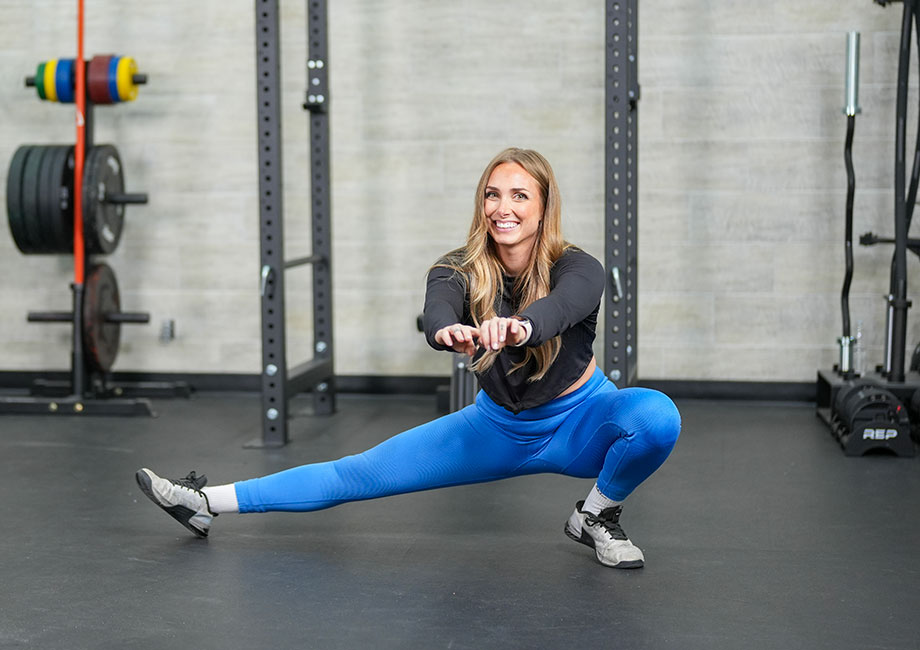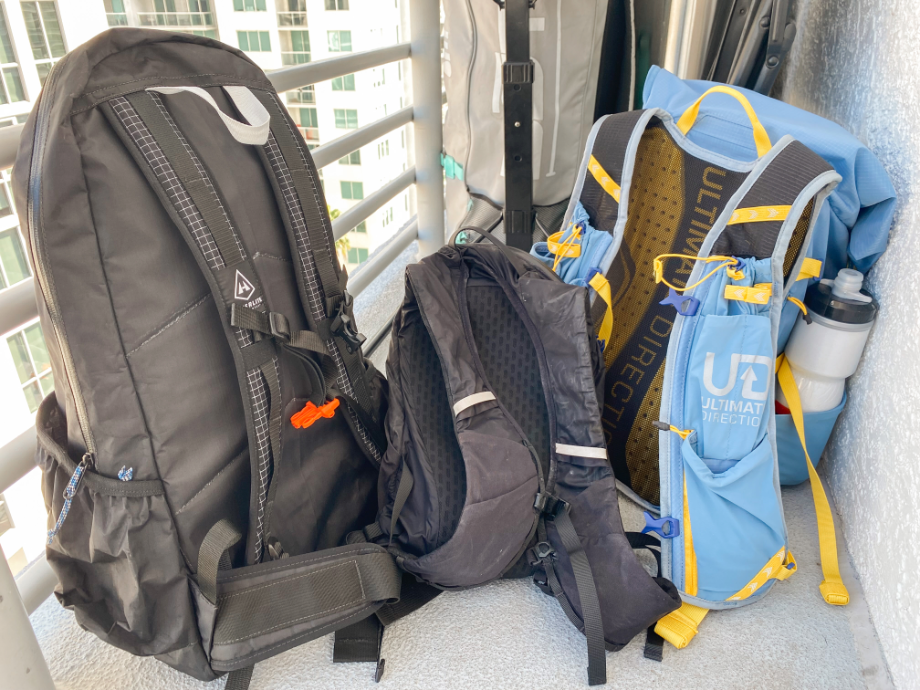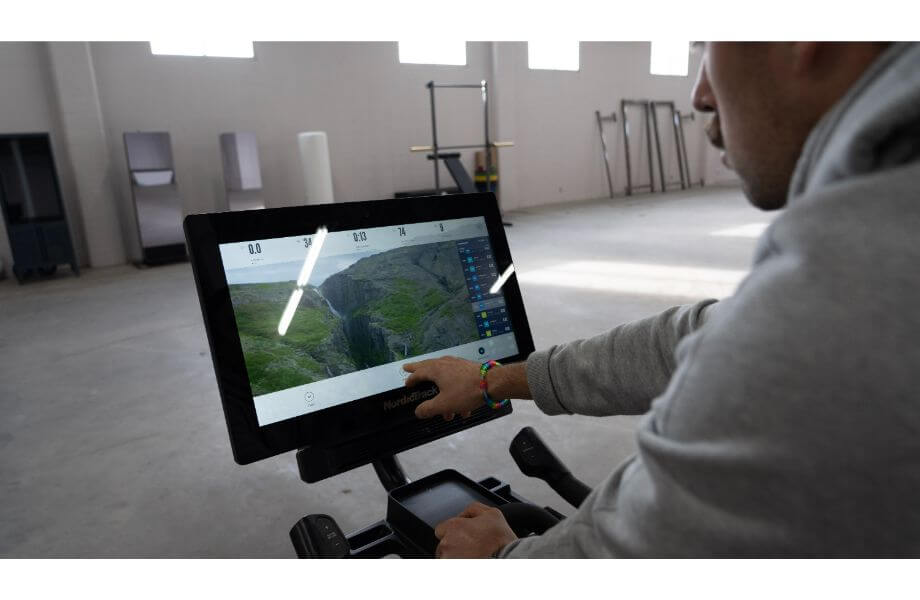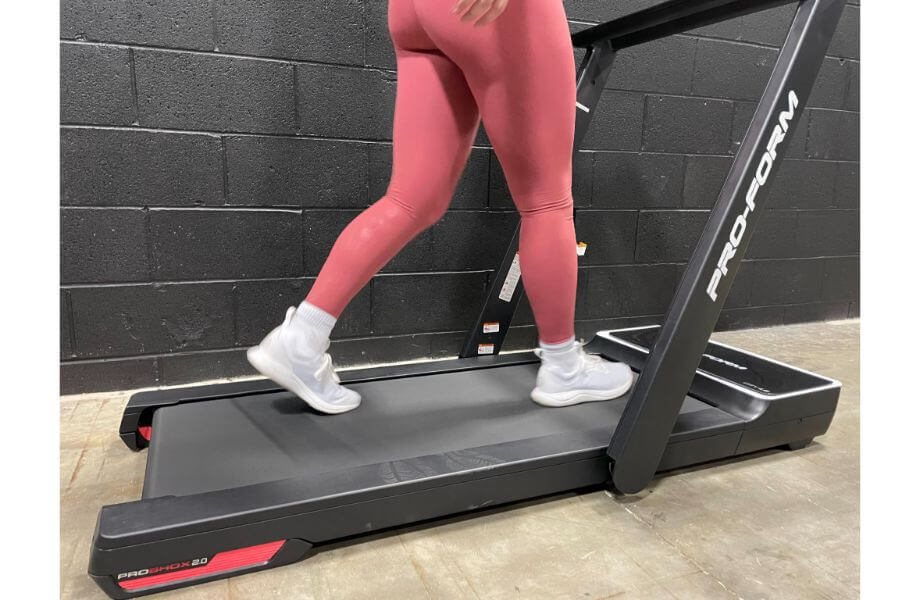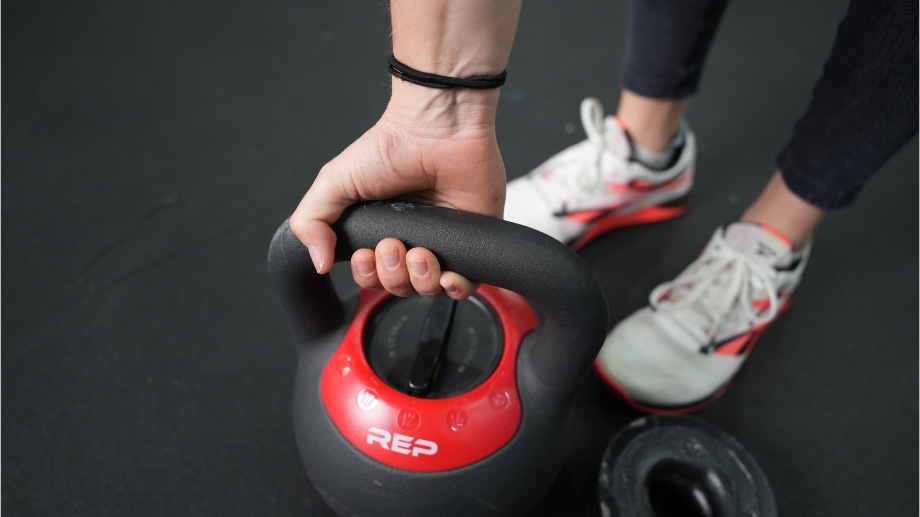You’ll never dethrone leg day staples like the barbell back squat, front squat, or classic lunge, but that doesn’t mean you can’t benefit from switching things up now and then. Luckily, a staggering amount of squat and lunge variations are available to help keep your workout routine endlessly varied.
The Cossack squat is unique in that it looks almost like a squat-side lunge hybrid. This single-leg squat involves moving through the frontal plane, or sideways for the layman, to improve mobility, flexibility, and strength in various lower body muscle groups and joints.
Kate Meier, NASM-CPT, USAW-L1, CF-L1, and GGR head of content, gives us the lowdown on this lower body exercise, providing step-by-step instructions for performing Cossack squats with proper form, common mistakes, benefits, and more!
How to Do the Cossack Squat
Muscles worked: Hip adductors, hamstrings, quadriceps, glutes
How to do it:
- Stand with your chest tall, back straight, and straight legs in a wide stance.
- Shift your weight to your left side, bending the left knee as you descend. As you move, bring your hips back, rotate your right leg externally, and keep both heels on the floor.
- Continue until you’re in a deep squat with your left knee fully bent and right toes pointing at the ceiling. You should feel a deep stretch from the hip adductors and hamstrings.
- Drive through your left heel and reverse the movement to return to the starting position.
- Repeat for your right side, then alternate sides on each rep until the set is finished.
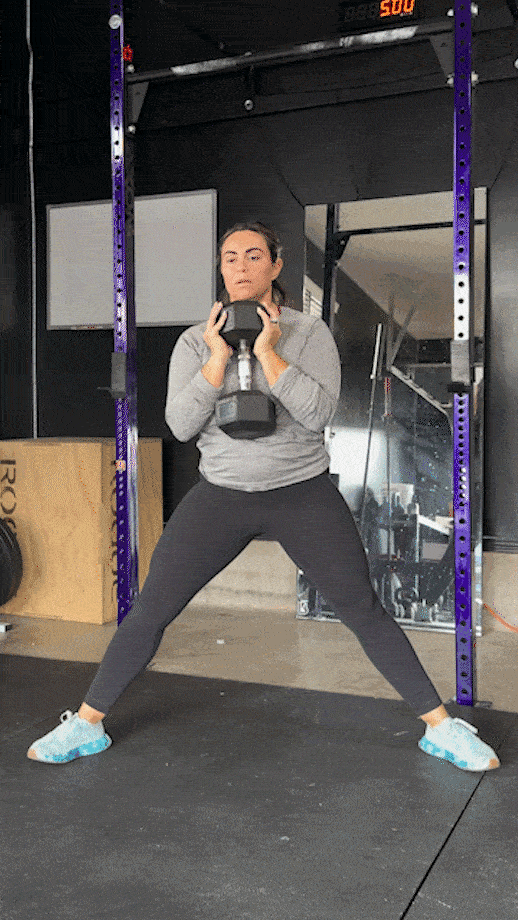
Trainer Tips for Form
The Cossack squat (named for its resemblance to a traditional Cossack folk dance move) is all about your squatting leg achieving full flexion at the hip, knee, and ankle as your other leg stretches to increase flexibility and elasticity.
Here are a few top trainer tips for getting the form picture-perfect.
It’s All About Balance
Many things in life are about finding balance, and the Cossack squat just so happens to be one of those things. You will literally fall over if you don’t work to maintain stability as you move through the range of motion.
RELATED: Balance Exercises
“It may sound counterintuitive, but performing Cossack squats using a light dumbbell or kettlebell held in front of the body may help you keep your balance,” says Kate Meier, NASM-CPT, USAW-L1, CF-L1. “The free weight serves as a counterbalance, encouraging you to maintain an upright posture and helping you to not fall backwards onto your butt as you reach the bottom position.”
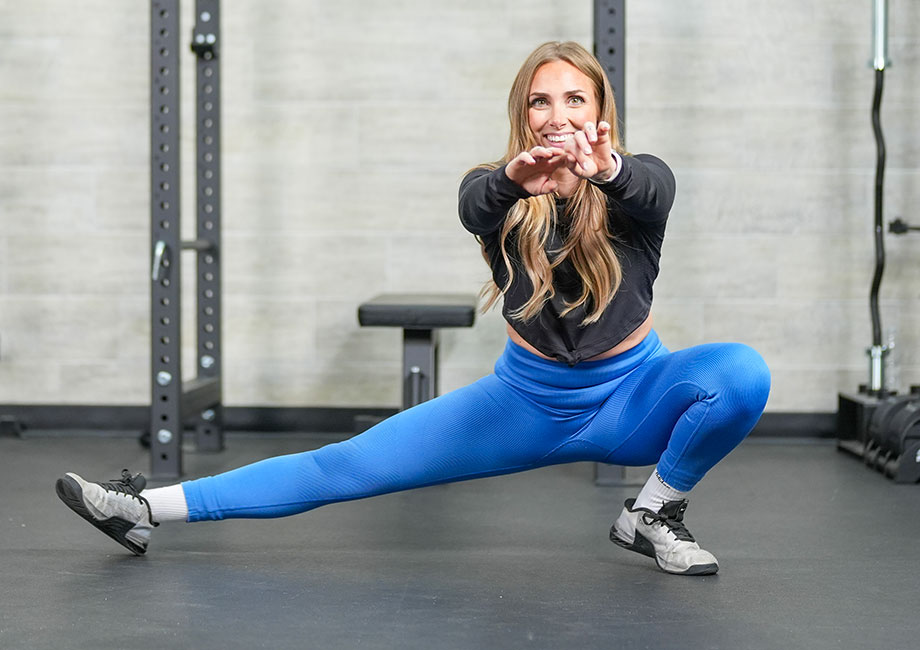
Remember—the key word here is light dumbbell. Going heavy converts your regular Cossack squat into a goblet Cossack squat and, while that holds some advantages over the bodyweight version, it acts as a hindrance to beginners who are not yet acquainted with the movement.
RELATED: Best Dumbbells
Plant Those Heels
The Cossack squat is similar to the traditional squat in that your heels should remain firmly planted on the floor at all times. If you find yourself coming up onto your toes, it may indicate that you’re lacking ankle mobility.
“Ankle mobility exercises will help improve your ankle’s range of motion,” says Kate. “Wearing weightlifting shoes while squatting also increases your ankle’s range of motion because they’re designed to have an elevated heel.”
So, keep those heels firmly flat on the floor, and don’t discount the value of some mobility exercises in your warm-up or wearing a pair of the best weightlifting shoes on your feet.
Take Your Time
There’s a reason you’ll rarely, if ever, see Cossack squats in a timed CrossFit WOD. While you can blast out bodyweight squat reps, plyometric exercises, and other simpler movements, the Cossack squat requires balance and poise to execute efficiently.
Like the Turkish get-up, you’ll want to move slowly through the Cossack squat, maintaining a strong, upright posture from start to finish. Flinging your body from side to side increases your risk of injury and decreases the time under tension (TUT) of your muscles, making each rep much less effective.
Make each rep count by moving slowly and with control at every stage of the Cossack squat.
Cossack Squat Benefits
It’s a given that squats and squat variations will improve your leg strength, size, and endurance, but what specifically do Cossack squats offer that you can’t get from other squat alternatives?
Improved Frontal Plane Movement
One of the biggest distinctions between the Cossack squat and virtually all other squat variations is its plane of movement. Most squats involve the sagittal plane, or front-to-back movements, whereas the Cossack squat utilizes the frontal plane or side to side.
That means you’ll receive muscle activation in a way that is entirely different from exercises like the traditional squat, front squat, split squat, and just about any other squat variation.
Incorporating frontal plane exercises in with your standard sagittal plane strength training also reduces your risk of injury, making it worth your while.
Increased Mobility and Flexibility
Few squat variations open the hips quite as much as the Cossack squat can. That’s fantastic news for sedentary individuals looking to stave off the effects of sitting at a desk all week.
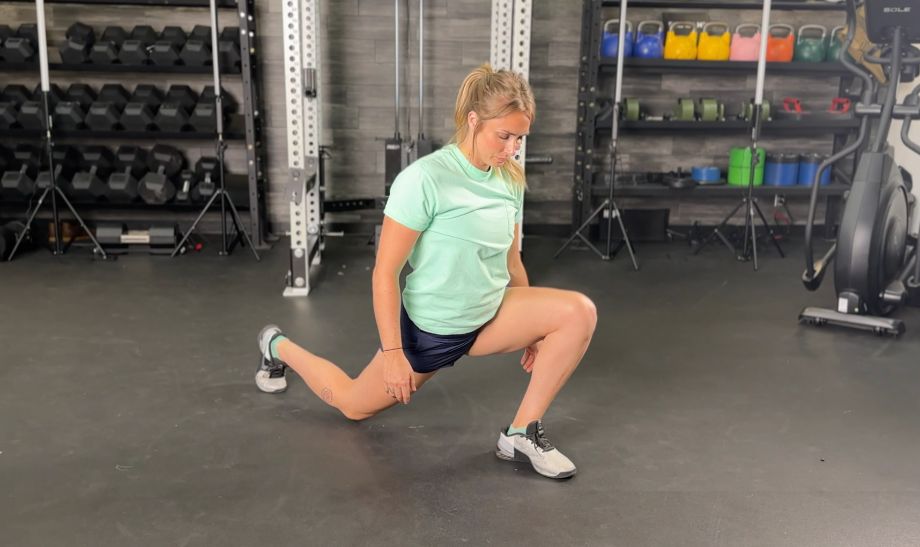
Thanks to its unique movement pattern, the Cossack squat increases mobility in the hips, knees, and ankles and promotes joint health, mobility, flexibility, and soft tissue health. It’s also a great stretch for the inner thighs.
Corrects Muscle Imbalances
Like the pistol squat, the Cossack squat is a unilateral exercise, meaning you’re working out one leg at a time. So, if you’ve been unknowingly compensating during your regular bilateral squat exercises, you may have muscle imbalances and strength deficits you’re unaware of.
Adding unilateral exercises into your workout routine helps address these deficits and correct them, ensuring you build strength and muscle equally on both sides of your body.
Who Should Do the Cossack Squat?
Short answer: everyone!
The Cossack squat provides a unique stimulus to your leg muscles, meaning anyone trying to build strength in their quads, hamstrings, glutes, and hip adductors can benefit.
Cossack squats are especially great for sedentary individuals (like office workers) who tend to experience pain due to their hips flexors being in a compressed position all day.
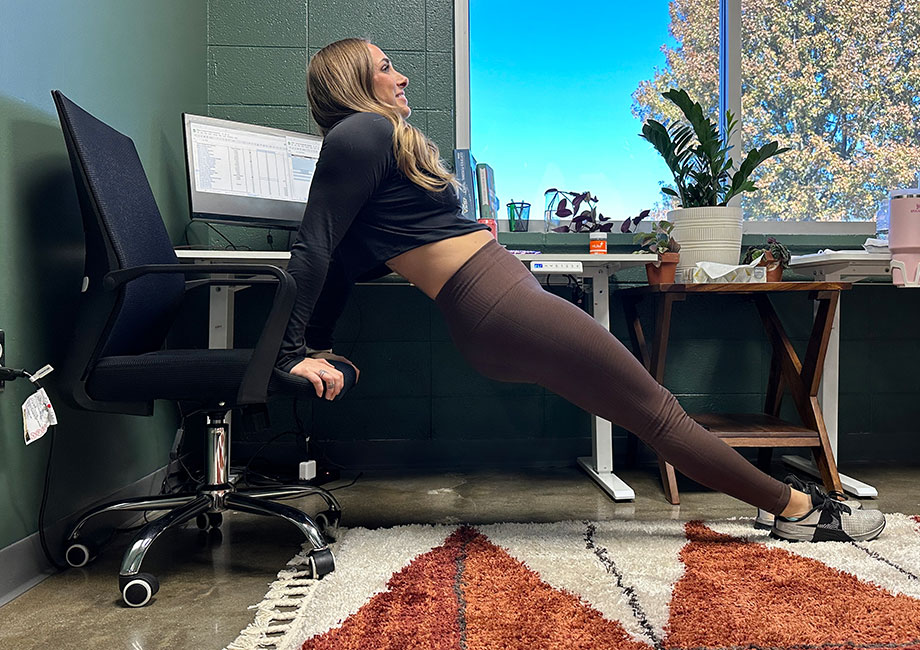
RELATED: Hip Flexor Exercises
Athletes can also benefit from adding Cossack squats to their routine, as incorporating sagittal plane, frontal plane, and transverse plane exercises helps promote great all-around strength and resilience that will result in improved sport performance and a decreased risk of injury on the playing field.
How to Program the Cossack Squat
Cossack squats make a great addition to leg day and full-body workouts, but when specifically should you pencil them into the schedule, and how many should you do?
“I tend to put the heavy strength training exercises first in the workout,” says Kate Meier, NASM-CPT, USAW-L1, CF-L1. “The Cossack squat makes a good warm-up to limber you up before strength training, but it’s also a good finisher since it gives your muscles a little stretch before you wrap.”
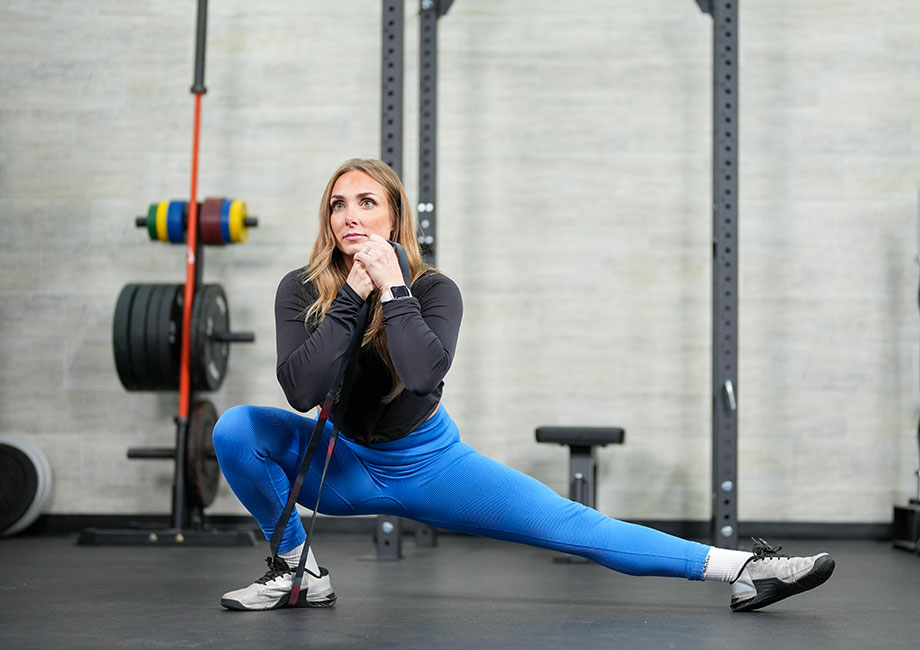
The rep scheme will vary depending on your personal fitness goals:
- For strength gains: Perform 2–6 sets of 1–5 reps using heavy weight
- To build muscle: Perform 3–6 sets of 6–12 reps using moderate weight
- For endurance: Perform 2–3 sets of 12–20 reps using light weight or no weight
Remember—the Cossack squat requires a fair amount of mobility and flexibility, but even if you’re regularly racking every available plate in the gym to do your barbell back squats, start light on the Cossack squat while you’re still learning. It’s better to be safe than sorry.
RELATED: How Many Reps To Build Muscle
Common Cossack Squat Mistakes
The Cossack squat is noteworthy because it’s so different from other squat forms, but by the same token, it’s also easy to make mistakes as you get acquainted with the movement.
Here are some of the most common mistakes associated with the Cossack squat.
Watch Your Back!
No, we’re not going to try to “cash you outside” or anything; we mean that it’s important to pay attention to what your back is doing during the movement. Just because the Cossack squat is a leg exercise doesn’t mean you can totally ignore what’s going on with your upper body.
“You want to ideally keep your chest tall, core tight, and back straight so you don’t inadvertently round the thoracic spine or arch the lumbar,” says Kate. “If you’re having trouble maintaining that posture, it could derive from poor hip mobility or flexibility.”
RELATED: Thoracic Mobility Exercises
Give yourself your best chance for success by working hip mobility exercises into your Cossack squat warm-up. This should help open your hips, allowing you to get a full depth Cossack squat without rounding or arching your back.
But Don’t Watch What You’re Doing!
Humans have this funny tendency to look down at their feet during movement. Our legs are there, and we’ve used them countless times in our lives, but we feel compelled to look at them, then at the floor, then at our feet, and every which way while we’re learning the Cossack squat.
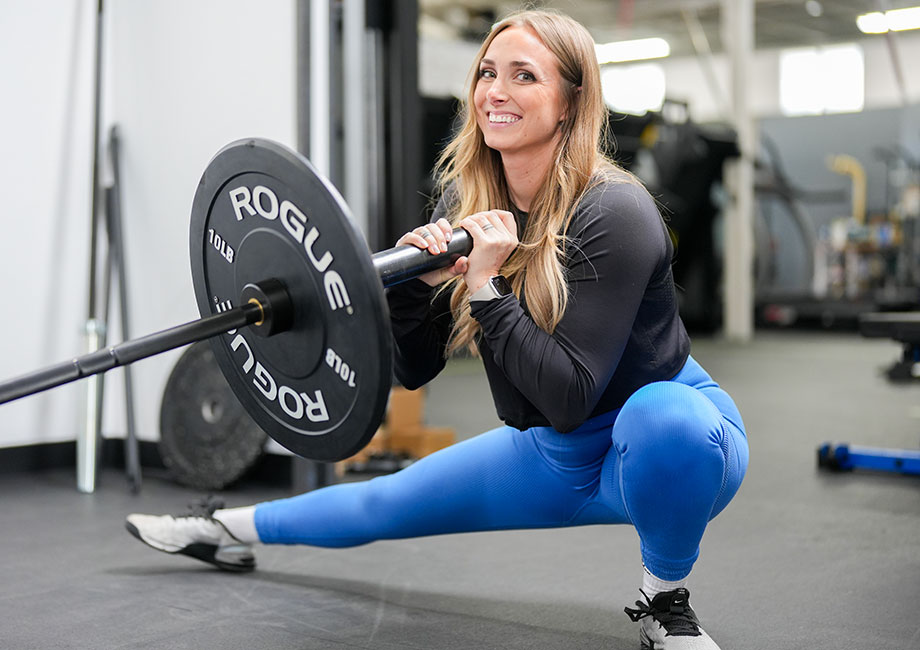
You don’t want to do that in this case!
Looking down during exercise causes you to inadvertently hunch forward, rounding your spine and throwing off your balance. It gets many a beginner lifter in trouble during traditional squats, deadlifts, and other exercises, and it will also complicate your ability to maintain an upright posture, neutral spine and neck, and balance while performing the Cossack squat.
So, fight the urge to look down and keep your eyes fixed forward instead. Maintaining a neutral neck and head position is your best bet for keeping your balance and nailing the form.
Cossack Squat Variations
The bodyweight Cossack squat isn’t the only way of getting your reps. Check out some of our favorite Cossack squat variations:
Landmine Cossack Squat
Why do it: Adding weight or resistance is often a great way to intensify the effects of a good exercise. The Cossack squat is no exception, and the landmine attachment makes an intuitive addition, given it can move with you.
How to do it:
- Secure your barbell to the landmine anchor and load it to the desired weight.
- Step back so that you can hold the end of the barbell in your hands in front of your body, similar to where you’d hold a dumbbell for a goblet squat.
- Shift your weight to one side, bending your knee as you descend.
- Continue until you’re in a deep squat with one leg fully bent and the other rotated externally so that your heel is grounded and your toes point toward the ceiling.
- Drive through the heel of your bent leg and reverse the movement to stand back up.
- Repeat the movement for your other side.
RELATED: Best Landmine Exercises
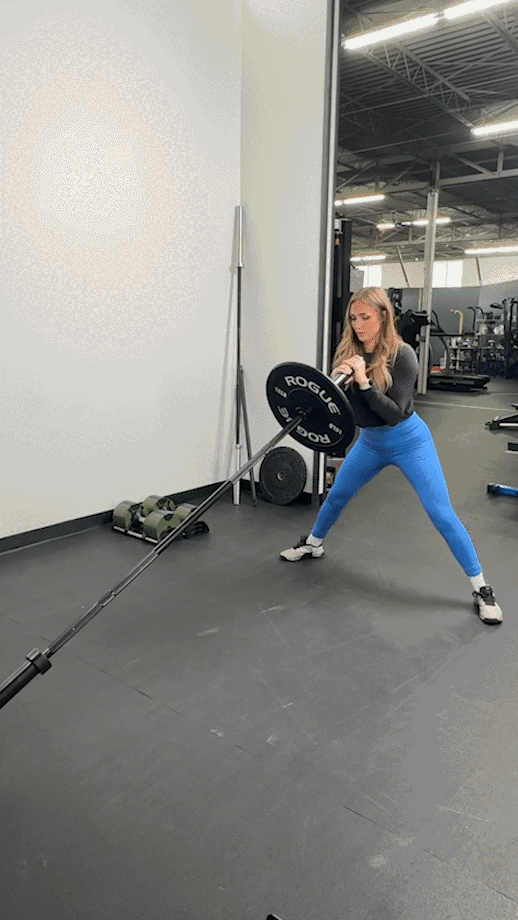
Banded Cossack Squat
Why do it: “Resistance bands are another great way to add resistance to your Cossack squat,” says Kate Meier, NASM-CPT, USAW-L1, CF-L1. “They’re inexpensive and provide constant tension throughout the movement.”
How to do it:
- Secure your resistance band to an anchor point, then wrap it around your waist and take a step away so that it is directly to your side and there is tension on the band.
- Get into position to perform bodyweight Cossack squats as normal, shifting to the side where you have the resistance band anchored. The resistance will lessen as you move towards the anchor point in the bottom position.
- Pause, then drive through the heel of your bent leg to stand back up. You will have to fight against the resistance of the band, increasing your muscle activation.
- Repeat as needed, then move on to your other leg.
RELATED: Best Resistance Bands
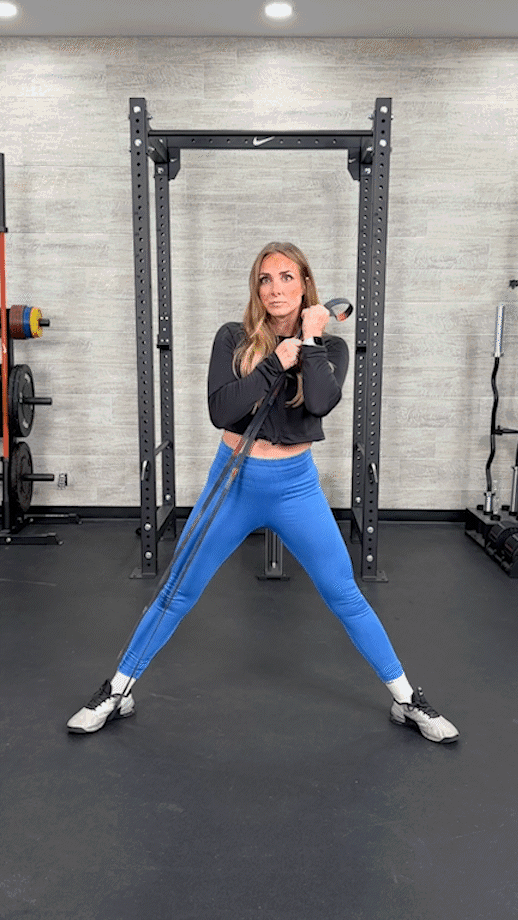
Lateral Squat
Why do it: Lateral squats look similar to Cossack squats, but may bear more similarity to traditional squats since the goal is to descend until your thigh is parallel with the floor. Beginners should find these easier to perform than the Cossack squat, making it a good stepping stone.
How to do it:
- Stand with your feet wider than shoulder-width, your chest tall, and your back straight.
- Bring your hips abc and shift your weight to one side, bending your knee as you move.
- Continue until your thigh is parallel with the floor.
- Pause briefly, then drive through your heel and return to center.
- Repeat for your other side, alternating sides on each rep until the set is finished.
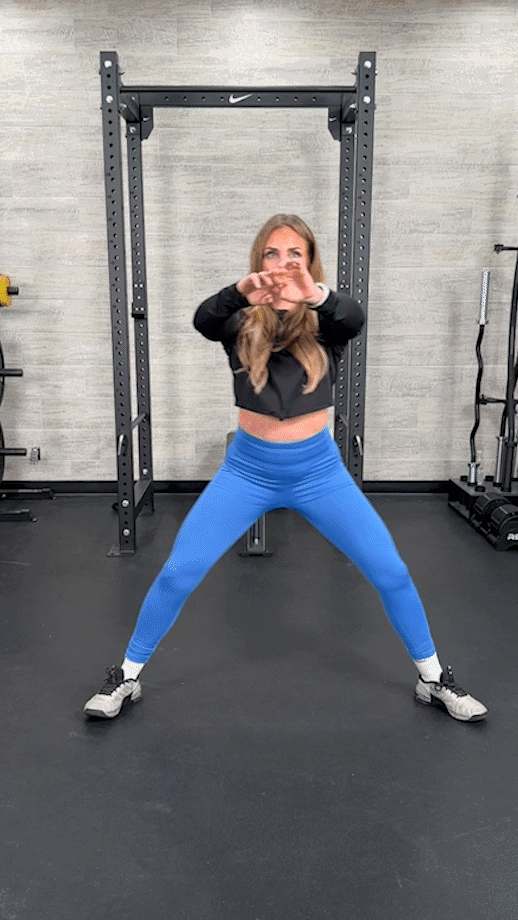
Cossack Squat: FAQs
What is a Cossack squat good for?
Cossack squats are good for building lower body strength, muscle, and mobility due to their unique movement through the frontal plane and greater range of motion.
Athletes, sedentary individuals, and most of the general population should benefit from including Cossack squats in their regular lower-body workouts.
What is the difference between a side lunge and a Cossack squat?
The side lunge and Cossack squat are mechanically similar and work the same muscles, but they are different in the following ways:
– Starting position: Cossack squats start from a wide stance, while side lunges are performed starting with both feet together.
– Depth: Cossack squats are meant to go as low as possible, while side lunges are performed until your inner thigh is parallel with the floor.
– Feet: Your toes point to the sky at the end of the Cossack squat, whereas your feet both remain firmly planted to the floor for the side lunge.
– Torso: Cossack squats are performed with an upright torso, whereas the side lunge involves a hip hinge that will angle your torso forward instead.
Additionally, the side lunge generally pairs better with heavier weights, making it the preferred choice for strength and hypertrophy gains, and the Cossack squat works much better for improving mobility, flexibility, and endurance.
Do Cossack squats build glutes?
Cossack squats can provide muscle activation to the glute muscles, so the short answer here is yes. However, other squat variations, like the traditional barbell back squat, will provide greater activation, as will exercises like the conventional deadlift, sumo deadlift, and hip thrust.
So, Cossack squats can be part of a well-rounded glute-building routine, but they shouldn’t be the primary move you employ for building big, strong glute muscles.
RELATED: Glute Exercises At Home


